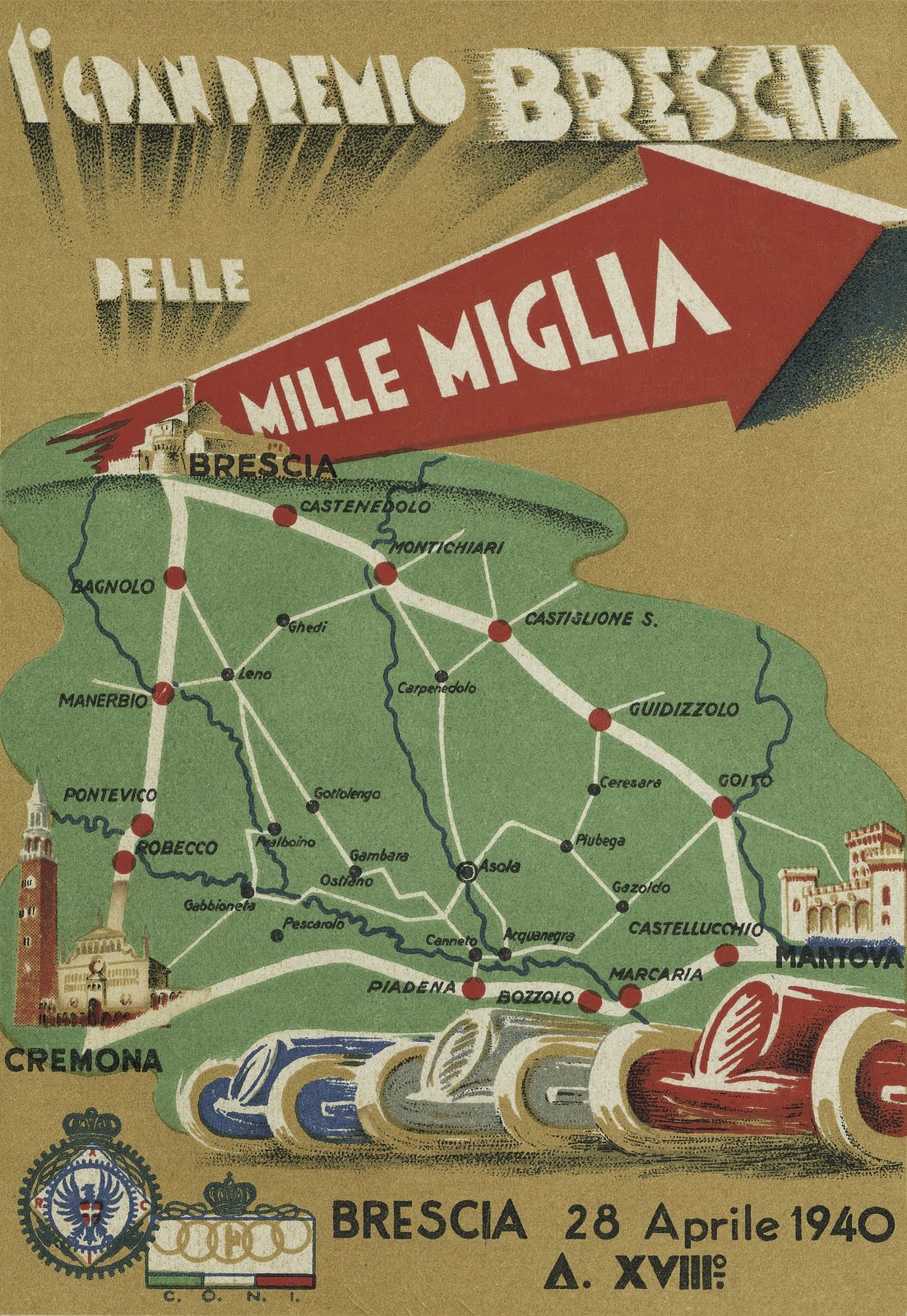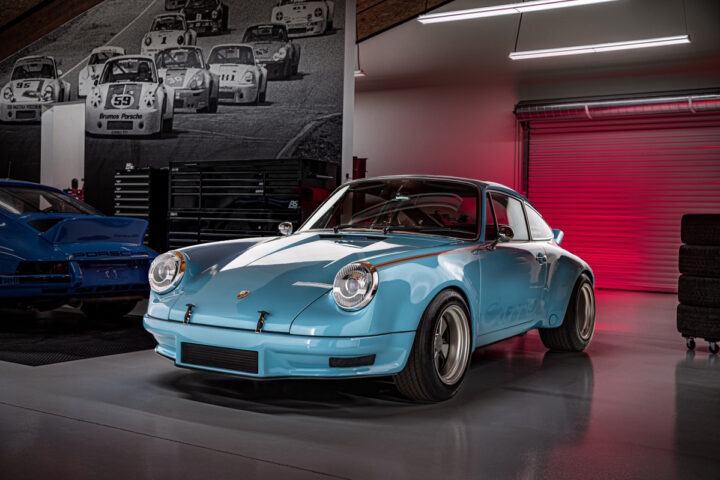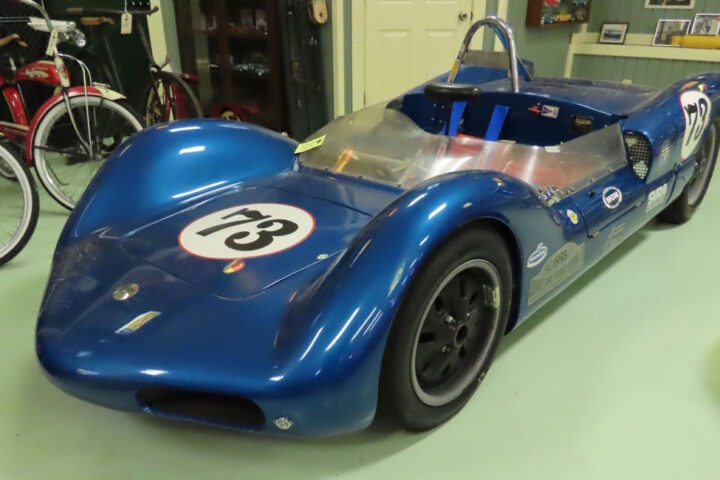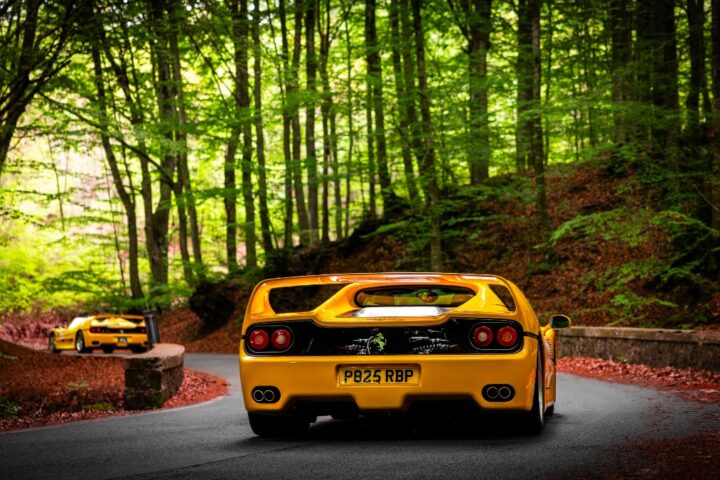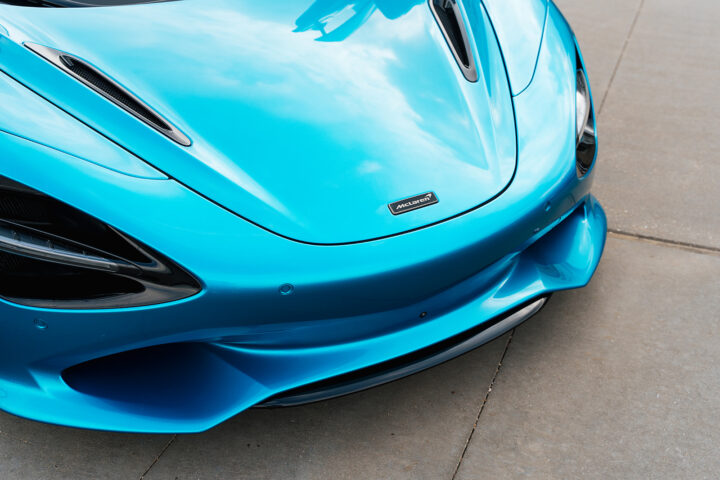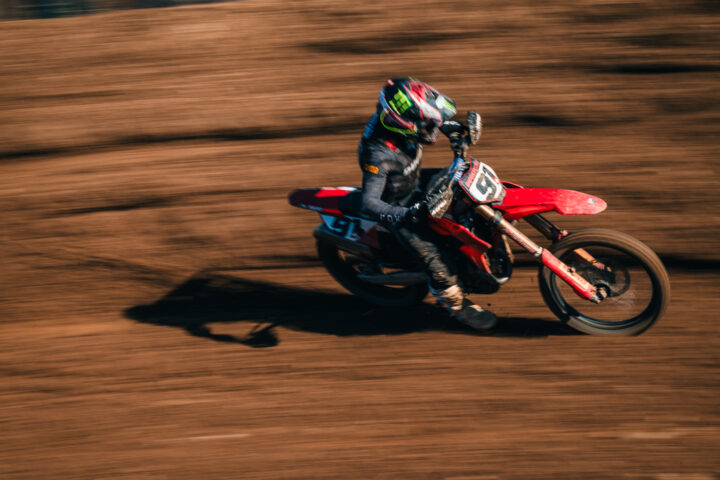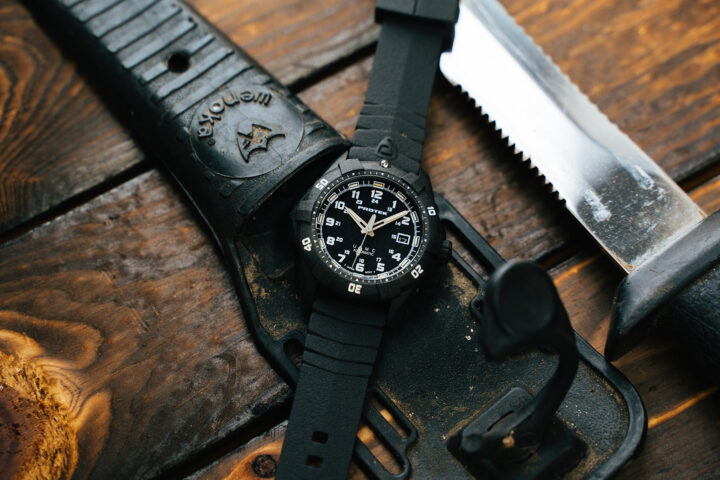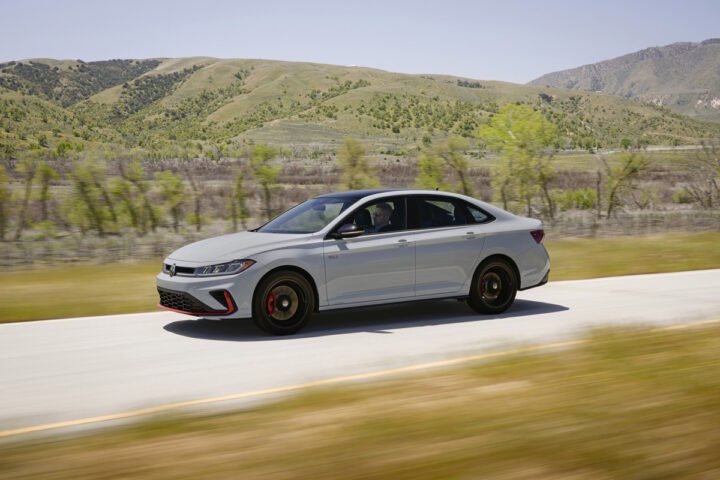
TGR Staff
70 years ago the racing department at BMW had only one thing on its mind: the 1st Gran Premio Brescia delle Mille Miglia. Five cars from Munich were registered for the big race, but preparations were not exactly worry-free. Indeed, the team ultimately faced a battle to get the cars ready in time. However, as the BMWs crossed the finish line one by one in Brescia on 28 April, they had achieved what few had dared to expect: overall victory, team victory, and third, fifth and sixth place in the rankings. That April day witnessed BMW’s greatest racing success so far on four wheels – and one which continues to define the character of the brand today. “The victory in the 1940 Mille Miglia remains a milestone in the history of the BMW brand,” says Dr. Klaus Draeger, member of the BMW Group Board of Management responsible for development. “It is evidence not only of extraordinary technical expertise but also of the passion shared by all those involved at BMW.”

The 1940 Mille Miglia was the climax of a journey that had begun with the design and presentation of the BMW 328. The BMW 328 was not only one of the most beautiful sports cars of the prewar era, but it was also the most successful sports car on the race tracks of Europe in the 1930s. A combination of outstanding road-holding and impressive engine power made it an object of desire for many racing drivers and offered private customers a taste of what undiluted roadster driving was all about.
A small brochure circulated among a select group of people in late 1935 revealed the existence of a new 2-liter sports car to be known as the “Typ 328”. The description of the car was deliberately low-key and avoided giving any performance or speed figures. The brochure was intended purely as an appetizer for “friends of the company”; there was no announcement in the press.
Journalists were left open-mouthed when they set eyes on the car for the first time in the Nürburgring paddock on 13 June 1936. There, Ernst Henne was preparing to race the 328 in the International Eifel Race the following day. The motorcycle world record holder roared away from his rivals off the start line and soon left the rest of the field trailing in his wake with a phenomenal average speed of 101.5 km/h. This show of strength from the 328 had commentators purring about the future of the German sports car. However, few could have guessed that they were witnessing the dawn of a new era.
Few observers are likely to have fully grasped what was unfolding in front of them that day. In an earlier press release, BMW had itself downplayed the new model as a “2-liter sports car with a slightly more streamlined body”, lulling some journalists – who referred only to its “2-litre V engine with twin camshafts” – into a misplaced sense of the ordinary. The understated approach might well have been a tactic on BMW’s part to avoid raising hopes too high, too quickly; after all, by that point, only three prototypes had been built.
The second victory for the 328 arrived in August, with British BMW importer H.J. Aldington sweeping all before him in the Schleißheimer Dreiecksrennen race. Aldington then persuaded the powers-that-be at BMW to give the car another run outside Germany. The three prototypes duly made their way to Ireland for the Tourist Trophy sporting green Frazer-Nash-BMW livery – and cantered to a 1-2-3. The 328 had got the ball rolling and several more victories followed over the ensuing months. However, it was still the three pre-production cars taking it in turns to rack up the wins, with various drivers at the wheel.
Private customers were forced to play the waiting game, as production was slow to get off the ground; the first cars were not delivered to customers until late April 1937. And so it was exactly a year since Henne’s debut outing before the first private owner of a BMW 328 had the chance to test his new purchase in race action.
At the 1937 Eifel Race it was left to the nine BMW 328 racers on the grid to fight it out for victory. Over the years that followed only a handful of cowed attempts were made by other cars to take on the hot-heeled BMWs. These intrepid lone rangers were doomed to failure as the BMW 328 quickly took Germany’s race tracks by storm.
Reports of victories continued to rain into Munich from every corner of Europe. And it wasn’t only class wins that the car was amassing so effortlessly, as much more powerfully-engined cars also succumbed to its irresistible will. The small 2-liter sports car was building a handsome collection of overall victories over once superior rivals.
1937 had been a hugely successful year for BMW and its new sports car. The BMW 328 had run out of rivals in the 2-liter class in Germany, and it had also put itself on the radar of sports car drivers in other countries with a string of successes abroad, mostly with Ernst Henne at the wheel. Now BMW needed the big international breakthrough, a triumph on foreign soil that would make headlines far and wide.
While central Europe remained firmly in winter’s grip, south of the Alps the motorsports community was priming itself for a race which had, over many years, become one of the most famous on the calendar: the Mille Miglia. On 3 April 1938 this legendary road race, starting for the 12th time from Brescia and leading through half of Italy, would send a whole nation into an unimaginable frenzy of enthusiasm. Preparations had been underway for months already, garages humming to the sound of racing cars flexing their muscles. At the Munich racing department, too, the engineers were hard at work, readying a brace of works cars for action.
The race organizers had revised the class boundaries for the 1938 event. The national sports car class was joined by categories for international sports cars with and without a supercharger. Of the 155 drivers entered for the race, 119 lined up in the national class, highlighting the Mille Miglia’s status as first and foremost an Italian national event. The smallest class in which international drivers could compete was, therefore, the 2-liter sports car class.
In 1938 the organizers set out to encourage more foreigners, i.e. German, drivers to take part. However, only four drivers responded to the appeal, all entering BMW 328 racers. The NSKK (National Socialist Motoring Corps) registered Prince Max zu Schaumburg-Lippe as its driver and – as a manifestation of the German-Italian friendship – the experienced Mille Miglia campaigner Count Giovanni Lurani as co-driver. BMW sent two works cars to the race, one manned by privateer drivers Uli Richter and Dr. Fritz Werneck, the other piloted by Britain’s A.F.P. Fane with William James alongside as his mechanic and navigator.
These three cars made up a team managed by Ernst Loof, head of the BMW racing department, and they were joined by the privately-entered driver/mechanic pairing of Heinrich Graf von der Mühle-Eckart and Theodor Holzschuh, an employee at the BMW sports car repairs department. Also on the start list were a Fiat, a Riley and an Aston Martin.
The weather for the race could hardly have been more perfect. Brescia had been basking in spring warmth for several days already, and only at the start of the race was there a slight chill in the air.
The center of Brescia was alive with anticipation over the night from 2–3 April. Thousands of excited onlookers had gathered at the start and lined the roads leading into the city to witness the unfolding of this extraordinary event. At 2.00 a.m. the first cars in the smallest-capacity section of the national class were waved on their way. The cars started at 30-second or one-minute intervals, according to the class. The long list of entrants meant that the first test for the drivers of the larger cars was one of patience. At least they could relax in the knowledge that they would be driving in daylight, although that also meant they would have a lot of overtaking to do.
By contrast, darkness had yet to yield when the cars in the 2-liter class were called to the starting line. Prince Schaumburg was the first to set off into the Italian night, on the stroke of 4.30 a.m., followed by Uli Richter, the three non-BMW cars, Fane and von der Mühle-Eckart. The BMW racers wasted no time in setting a withering pace, showing enviable confidence in the durability of their beautifully prepared race engines. By the time they reached Rome, they had already seen off the challenge of two of the other manufacturers in their category, and the third was forced to retire shortly afterward. But the BMWs were not about to slow down to celebrate. Quite the opposite, in fact. With their class rivals out of the picture, they were free to launch an attack on the more powerful cars. The Germans were driving with clockwork precision, and only a few minutes separated them at any one time.
The fastest drivers arrived back in Brescia in the late afternoon. Less than 12 hours after crossing the start line, the powerful supercharged Alfa Romeos, the Delahayes and the Talbots were back at base, as expected. The big surprise, though, was still to come; Fane steered his BMW 328 to eighth place in the overall classification, winning the 2-liter class and leaving a considerable number of supercharged cars in his wake in the process. Fane’s fellow-BMW 328s followed him home in 10th, 11th and 12th overall, securing 2nd, 3rd and 4th places in their class and rounding off a spectacular race for BMW. Added to which, they also won the team prize for consistency and the award for the best foreign entrant.
BMW’s pride in claiming the biggest win in the company’s history was obvious. The 328 had proved that it was capable of sustaining incredibly high speeds over long distances without complaint. The car’s combination of impressive output and flawless roadholding had shown that it was possible to defeat the challenge of far more powerful rivals. For BMW this success represented the international breakthrough in European motorsport.
In the 1930s the regulations governing motorsport in Germany decreed that a racing sports car had to be open-topped. The BMW 328 was a roadster in the classical mold, but there were also a few hard-top examples of the 328 in circulation, and for a short while two of these found themselves very much in the public glare.
Since its maiden outing in the 1936 Eifel Race, the BMW 328 had quickly established an iron grip over Europe’s race tracks. For the engineers in Munich, however, this was no reason to rest on their laurels. Instead, they were working flat out on increasing the car’s original output of 80 hp. Rival manufacturers had already boosted their engines to something close to 110 hp, but a significant rise from that level was not expected. There was certainly little scope to further reduce the weight of what was hardly a heavy car in standard production form. The only way to increase its speed was to reduce drag. The curvaceous form of the 328, with its prominent front wings, may have been a masterstroke of engineering and design, but it was less than ideal aerodynamically. The BMW engineers were therefore charged with designing a totally new body based on the latest knowledge from aerodynamics research.
Tests had shown that an enclosed saloon, despite its larger cross-sectional area, could outperform an open sports car using airflow optimization measures. Convincing performances in the Le Mans 24-hour race in 1937 and 1938 allowed the Frankfurt-based firm Adler, who introduced the first “racing saloons” to competitive action, to demonstrate clearly how streamlined bodies could balance out a deficit in engine power.
BMW had been investigating this area of car development at the same time, but it was Professor Wunibald Kamm, head of the Research Institute of Automotive Engineering and Vehicle Engines at the Technische Hochschule Stuttgart (FKFS), who conducted the first wind tunnel tests with BMW models.
The BMW engineers were now working under considerable pressure. As a celebration of the Berlin-Rome Axis, the German and Italian racing authorities had decided to organize a high-speed race in October 1938 on the newly built motorways between the two capitals of fascism. For BMW and the other manufacturers involved, this meant developing a high-performance sports car in double-quick time, one which could not only hold its own in race competition but also had a realistic chance of overall victory.
Rudolf Flemming, who had played a major role in the design of the 328, was instructed to make the car with a closed roof to use all the benefits of streamlined design. However, this ruled it out of sports car races in Germany as closed cars were not permitted. Guided squarely by the principles of lightweight design, Flemming designed an intricate space frame for the 328 chassis and covered it in a thin aluminum skin.
However, the car known internally as Project AM 1007 was far from convincing. The Eisenach-built body fell short of the mark in terms of workmanship, and the car’s handling left a great deal to be desired. While the car achieved previously undreamt-of speeds on test runs, it was so unstable that it needed the full width of the motorway to do so. A huge amount of development work was still required to turn this into a racing car worthy of the name.
The efforts of BMW to get a fast car up and running had not gone unnoticed outside the company. Back in the spring of 1938, the NSKK had founded its own racing operation, a self-styled German national team for sports car racing. Its aim was to fly the German flag at events abroad with its own trio of BMW 328 racing cars. The BMW factory had a contractual obligation to keep the NSKK cars up to the latest stage of development, but its new racing saloon represented a potential rival to the NSKK team – one that had to be taken seriously. Under no circumstances could a works driver be allowed to jeopardize the victory the NSKK team had set its sights on. However, when Prince Max zu Schaumburg-Lippe, the team’s leading driver, demanded he also be given a racing saloon, BMW responded that they had no spare capacity to built one.
Schaumburg-Lippe was therefore left with no other option than to shop around among his allies. The Mille Miglia had offered clear evidence that smaller-engined cars could achieve extremely high speeds through the use of lightweight, streamlined bodies. Now, a year later, Germany’s good relations with Italy helped to prompt an offer from Carrozzeria Touring to produce a streamlined body. The Milan-based coachbuilder was already working on a similar project for Alfa Romeo and could call on previous experience for the job, having built a body of the same type a year previously. This streamlined construction in patented Superleggera form could be adapted to the standard 328 chassis with no great trouble, and the Italian craftsmen came up with the finished article in just four weeks.
With no wind tunnel testing available at Touring, the engineers successfully relied on instincts and empirical methods to give the car the right form. The Coupé weighed in at just 780 kg and looked resplendent in German racing white, but it was far more than just a pretty face. Test runs had shown that it was capable of exceeding the 200 km/h mark – and holding a relatively straight line in the process. The Touring Coupé lined up for its debut race at Le Mans on 17 June 1939 with Prince Schaumburg and BMW engineer Hans Wencher entrusted with the driving duties. After 24 hours and 3,188 kilometers, the pairing emerged triumphant in the 2-liter class with a sensational average speed of 132.8 km/h. They even managed an outstanding fifth position in the overall classification, getting the better of much larger-engined cars along the way.
The success of the “Cinderella” Touring Coupé was greeted with mixed feelings at BMW. However, the engineers at the development department had not been idle themselves. Extensive wind-tunnel testing had revealed that the Project AM 1007 streamlined body did not fit the chassis. The newly formed “Künstlerische Gestaltung” design department headed by Wilhelm Meyerhuber was therefore asked to draw up a new streamlined body under project number AM 1008.
To improve the car’s straight-line stability, the chassis was extended by 20 centimeters. The newly developed space frame, made from Elektron, weighed just 30 kilograms. Taken as a whole with the aluminum outer skin, this meant BMW now also had a “superlight” body in its arsenal.
The Kamm Coupé was significantly larger than the comparable Touring variant, but a rigorous adherence to lightweight design principles meant it was also 20 kilos lighter. It took several months to put the car together due to restricted capacity in the prototype construction department. But, in contrast to their Italian counterparts, BMW engineers were able to put their works racing saloons through extensive testing. In late summer 1939, the car was given a thorough examination of the Munich to Salzburg autobahn and further improvements were made to a host of details.
The investment of time and effort was to pay dividends. The Kamm Coupé had much better directional stability and proved to be far less sensitive to side winds. A Cd of approximately 0.25 (measured using a model) was well below the Touring Coupé’s figure of approx. 0.35. The works car also set a new benchmark in terms of speed, hitting a maximum of 230 km/h. However, with the outbreak of war, nobody knew whether it would ever get the chance to show off its talents.
There were also advances in streamlined design to report in open car construction. The design team headed by Wilhelm Meyerhuber tabled designs for a streamlined Roadster whose sweeping body created the impression of dynamic performance and speed even before a wheel was turned. Models were also made of the Roadster and subjected to intensive testing in the Stuttgart wind tunnel. Then, in autumn 1939, a space frame was fixed to the standard chassis of the previous year’s Mille Miglia class winner and covered with a thin aluminum skin. The prominent edging of its front wings soon earned the car its nickname: the “Trouser Crease” Roadster.
The next step was to optimize the car’s chassis tuning. To this end, Munich-based racing driver Uli Richter was handed the task of taking the finished car out in the icy cold for a series of high-speed runs along the autobahns outside Munich. However, the streamlined roadster required only minimal improvements. Another two space frames had already been mounted to the requisite chassis, but the clock was starting to tick. The body department in Munich was understaffed for the job in hand, as BMW only built cars in Eisenach at the time, and there were fears that the two racers would not be ready to meet the spring deadline. If ever there was a time to tap into those good relations with Milan again, this was it. The two half-finished racing cars were duly transported over to Touring, and the experienced Italian coachbuilder had no problem finishing off the cars in a short space of time. Willy Huber, the racing department’s very own master of all trades and a gifted metalworker, traveled with the cars to Milan and was on hand to advise his Italian colleagues when it came to working with the aluminum sheeting.
Spring 1940. In Italy, all attentions are focused on bringing the Mille Miglia back to life. The legendary race had last been run over the historic course in 1938. However, after a rash of accidents it had been temporarily suspended. Now, two years later, the Mille Miglia was back in business, but the original route had been dropped in favor of a 167 km triangular course between Brescia, Cremona, and Mantua. The drivers would complete nine laps of the new circuit, a move warmly welcomed by the watching pubic, who only saw the cars fly by once when the race followed its original route.
The new route was not as spectacular, though. It followed well-surfaced roads through the flat countryside and included a lot of long straight sections which were expected to lead to high average speeds. In a nod to tradition, the race was once again billed the 1st Gran Premio Brescia delle Mille Miglia.
Planning for the German entry got underway with military precision in March 1940. BMW racing boss Ernst Loof traveled to Italy with a group of drivers, the two Coupés and a single Roadster to familiarise themselves with the route, work out a race strategy and organize the building of their garage. Working according to average fuel consumption of 20 liters per 100 km, the course was split into three 500 km sections. On this basis, the ideal location for a garage turned out to be Castiglione, some 25 km outside Brescia. This would be the topping-up point for fuel and oil, and Loof could take the opportunity to pass on any necessary instructions to his drivers here.
In the final three days before the race, the drivers gathered with their cars for technical inspection at the Piazza della Vittoria in the center of Brescia. Among them were the five German BMWs with their silver paintwork. The starting field was dominated traditionally by the red cars of the local contenders. 70 Italian driver teams would line up for the race in Fiats, Lancias and Alfa Romeos. They would be joined by two blue cars from French manufacturer Delage, also with Italian drivers at the wheel.
The members of the NSKK team were entered to drive the three streamlined Roadsters, having represented Germany with great success in races abroad over the previous two years. Car number 71, the first streamlined Roadster, was piloted by Hans Wencher and Rudolf Scholz, the two other Roadsters – car numbers 72 and 74 – were crewed by Willi Briem/Uli Richter and Adolph Brudes/Ralph Roese respectively. The three teams were under instructions not to push too hard, but to maintain a good speed and look after their machinery. Although the aim was to finish as high up the standings as possible, the main priority was to complete the race and win the team prize.
The two Coupés, meanwhile, were entered by the ONS (the highest-ranking national sports authority in Germany at the time). Fritz Huschke von Hanstein and Walter Bäumer would drive the Touring Coupé, while two outstanding Italian drivers – Count Giovanni Lurani Cernuschi and Franco Cortese – had been recruited to pilot the works Kamm Coupé. While the target for these two Coupés was an overall victory, tradition suggested that the Alfa Romeo team was a far more likely winner. BMW’s Italian driver pairing was certainly in with a chance, though, the Kamm Coupé having displayed superior handling in testing and reached much higher speeds than the Touring Coupé.
28 April, at 4.00 a.m. The cars are sent on their way at one-minute intervals. Von Hanstein/Bäumer – in the first BMW – entered the fray at 6.40 a.m., followed by their team-mates and the Italian drivers in the largest-capacity class. The youngster von Hanstein set out his stall from the off, covering the first lap at a speed nobody present had thought possible. Already, the gap between the BMW driver and his closest pursuer in a Delage was one and a half minutes. Lurani/Cortese, meanwhile, was lying third in the second BMW Coupé, followed by one of the highly fancied Alfa Romeos. The three Roadsters were biding their time in seventh, eighth and ninth positions.
On the second lap, the two BMW Coupés led the way, with the Italians locked in a battle with the charging streamlined Roadsters. However, the Kamm Coupé could not keep up such a breakneck pace for long. It was hit by problems first with the carburetor, then with the oil supply, and on lap 7 the hugely disappointed driver pairing were forced to retire from the race.
The Touring Coupé, meanwhile, was continuing to reel off the fast laps undeterred. Indeed, von Hanstein set the fastest time ever recorded in a sports car race with an average speed of 174 km/h. However, there was the odd difference of opinion between von Hanstein and his co-driver Bäumer, as the ambitious baron was determined to win the race and ignored the pre-arranged driver changeover. In the end, Bäumer had to be persuaded to settle for the role of co-driver to make sure of the win. The Coupé was gradually building up an unassailable advantage over the chasing pack, though, and the two men finally swapped seats a few kilometers from the finish. In the end, it was Walter Bäumer who had the privilege of driving the Touring Coupé across the line to claim overall victory.
Unsurprisingly, celebrations were decidedly muted among the Italian crowd. Instead, the packed stands were immersed in a collective sense of bewilderment. What had happened to the red cars?
Over 15 minutes passed before the Alfa Romeo of Farina/Mambelli came home in second place, followed by Brudes/Roese in third, Biondetti/Stefani in fourth, Briem/Richter in fifth and Wencher/Scholz in sixth place. BMW had topped both the team and overall standings, and great shows of excitement awaited the crew on their return to Munich. Odeonsplatz and the Residenz (Royal Palace) provided an impressive setting in which to display the winning car to the people of Munich.
Source: BMW

